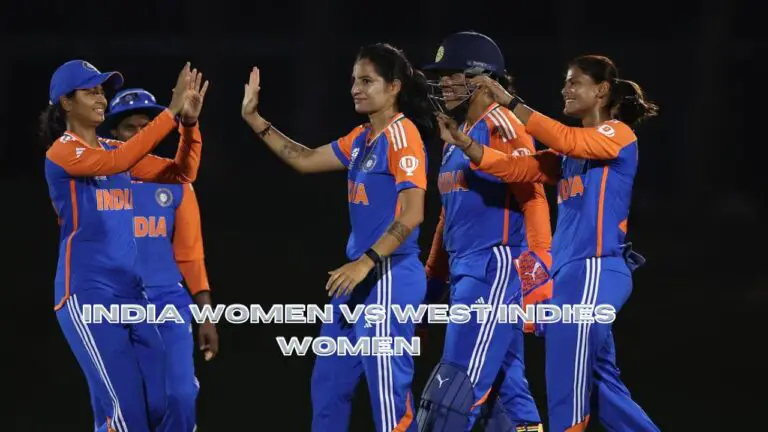
Women's Beach Volleyball
Beach volleyball, a sport that combines athleticism, strategy, and the vibrant energy of the beach, has gained immense popularity worldwide. Women’s beach volleyball, in particular, showcases the incredible skills and competitive spirit of female athletes. This comprehensive guide delves into the world of women’s beach volleyball, covering its history, key players, ranking systems, and more. Women’s Beach Volleyball
History of Women’s Beach Volleyball
Origins and Evolution
Women’s beach volleyball has a rich history that dates back to the early 20th century. The sport began as a casual activity on the beaches of California and gradually evolved into a competitive sport. The first official women’s beach volleyball tournament was held in the 1950s, marking the beginning of organized competition.
Olympic Inclusion
The inclusion of beach volleyball in the Olympics in 1996 was a significant milestone for the sport. This move brought global attention to women’s beach volleyball and showcased the talents of female athletes on an international stage. The Olympic platform has since become a crucial arena for the sport, driving its growth and popularity.
Key Players in Women’s Beach Volleyball
Pioneers and Legends
Over the years, several female athletes have made remarkable contributions to beach volleyball. Players like Misty May-Treanor and Kerri Walsh Jennings are considered legends in the sport. Their partnership and dominance in the early 2000s set new standards for excellence and inspired a new generation of players.
Current Stars
Today, the world of women’s beach volleyball is filled with talented athletes who continue to push the boundaries of the sport. Players such as April Ross and Alix Klineman have made headlines with their impressive performances and numerous victories on the international circuit. Their skills, teamwork, and determination exemplify the high level of competition in modern women’s beach volleyball.
Ranking Systems in Women’s Beach Volleyball
FIVB World Rankings
The Fédération Internationale de Volleyball (FIVB) is the governing body for beach volleyball and oversees the ranking system for female players. The FIVB World Rankings are based on a points system that takes into account the performance of players in various tournaments. Points are awarded based on the level of competition, the number of teams, and the final placement of the players.
National Rankings
In addition to the FIVB World Rankings, many countries have their own ranking systems for women’s beach volleyball. These national rankings help identify the top players within each country and often determine eligibility for international competitions and Olympic qualification.
Training and Techniques
Physical Conditioning
Beach volleyball requires a high level of physical fitness. Players must have strong endurance, agility, and strength to perform effectively on the sand. Training regimens typically include cardiovascular exercises, strength training, and drills that enhance speed and reflexes.
Skills and Strategies
Key skills in beach volleyball include serving, passing, setting, attacking, blocking, and digging. Players must master these techniques to excel in the sport. Strategies often revolve around communication, positioning, and exploiting the weaknesses of opponents. The unique dynamics of playing on sand also require players to adapt their movements and strategies accordingly.
Major Competitions and Tournaments
FIVB Beach Volleyball World Championships
The FIVB Beach Volleyball World Championships is one of the premier events in the sport. Held biennially, this tournament attracts the top women’s beach volleyball teams from around the world. Winning this championship is considered one of the highest honors in beach volleyball.
Olympic Games
The Olympic Games represent the pinnacle of achievement in women’s beach volleyball. Competing in the Olympics offers players the chance to showcase their talents on a global stage and vie for the prestigious gold medal. The rigorous qualification process and the high level of competition make the Olympics a highly anticipated event for both players and fans.
AVP Tour
In the United States, the AVP (Association of Volleyball Professionals) Tour is a prominent beach volleyball circuit. The AVP Tour features numerous tournaments throughout the year, providing a platform for top American players to compete and gain recognition. The tour also helps promote the sport at the grassroots level.
Impact of Women’s Beach Volleyball
Inspiring the Next Generation
Women’s beach volleyball has had a profound impact on inspiring young athletes. The visibility of female players in major tournaments and media coverage encourages girls to pursue the sport. Many young players look up to professional beach volleyball athletes as role models and aspire to achieve similar success.
Promoting Gender Equality in Sports
The prominence of women’s beach volleyball has also contributed to the broader movement for gender equality in sports. The sport’s popularity and the achievements of female athletes have challenged traditional gender norms and highlighted the capabilities of women in competitive sports. This has led to increased support and investment in women’s sports overall.
Conclusion: The Future of Women’s Beach Volleyball
The future of women’s beach volleyball looks incredibly promising. With a strong foundation of talented players, dedicated training programs, and growing support from fans and sponsors, the sport is poised for continued growth and success. As we look ahead, we can expect to see even more thrilling matches, inspiring performances, and new milestones being reached in women’s beach volleyball.






